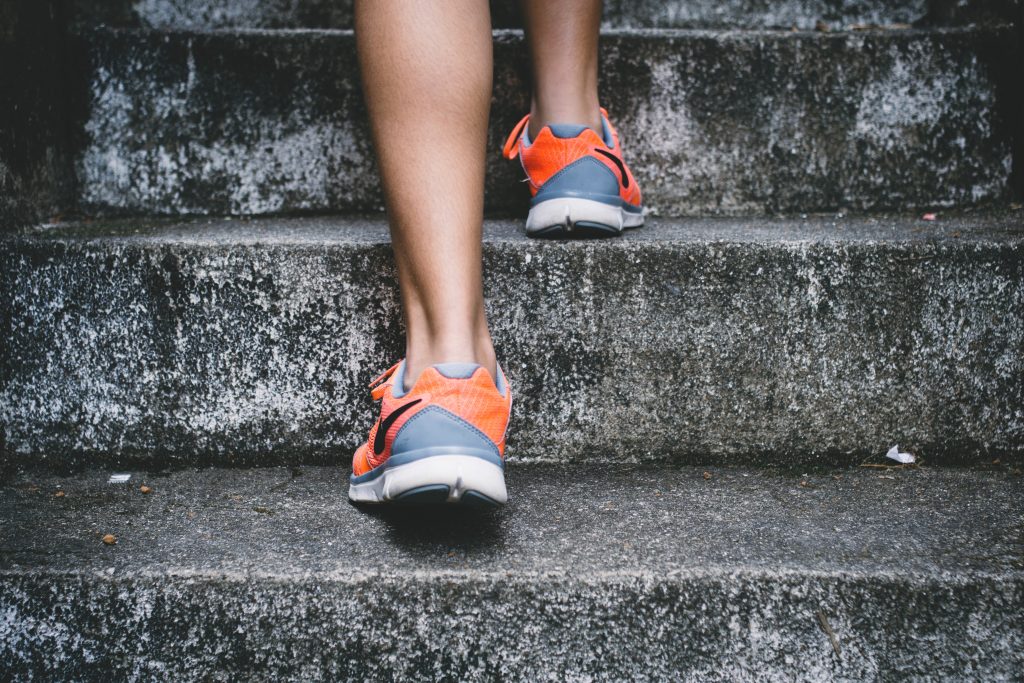Is Exercise Keeping You Overweight and Exhausted?

No pain, no gain.
Go big or go home.
What doesn’t kill you makes you stronger.
And one of my favorites: But did you die?
The messages we receive about pursuing weight loss, or fitness in general, are all about pushing ourselves hard, deprivation, and pain. Let’s set the mental and energetic component of beating yourself up like this aside for now and focus strictly on the physical, metabolic, and hormonal aspects of this very flawed messaging, especially in regards to people living with an autoimmune disease or chronic health condition.
Every week someone tells me how hard they’ve been working to lose weight and yet it doesn’t seem to matter what they do, the weight won’t budge. Maybe the scale moves 5 pounds or so but then it hits a plateau. Or maybe this person feels they have no control – they say it doesn’t matter what they eat or how hard they work, nothing makes a difference. They’re carrying extra weight, they’re frustrated, and they’re exhausted.
One of the first things I suggest is to dial the exercise DOWN.
“More isn’t always better…”
Aerobic exercise has a nearly endless list of health benefits that we’re all familiar with by now. But more isn’t always better, especially when our bodies are already working overtime attacking ourselves. Exercising at a high intensity, like the 70-80% of our max heart rate recommendation that’s so common, repeatedly for extended periods of time (commonly referred to as “chronic cardio”) can often do us more harm than good. Chronic cardio has some detrimental effects.
Chronic cardio fries the body’s fight-or-flight system. Intense exercise is a stressor and our body responds to stress by signaling for the adrenal glands to produce cortisol. Extended periods of hard exercise performed repeatedly puts a huge strain on the adrenal glands. Our adrenals are already under a lot more pressure than they can efficiently handle in our modern lives and this extra workload often pushes them too far.
Hard workouts increase cortisol production. As stated above, our adrenal glands produce more cortisol in response to the stress. Cortisol damages the lining of the gut, interferes with optimal immune system functioning, and suppresses testosterone – the hormone responsible for muscle growth in both men and women. Testosterone also elevates mood, improves cognition, and is a powerful anti-aging hormone.
Excess cortisol from chronic cardio causes chronic inflammation. Chronic inflammation is a confused or failing immune system response that contributes to a host of diseases including cardiovascular disease and cancer. Additionally, sustaining a high level of inflammation for an extended period of time puts you on the autoimmune spectrum – the same one we’re trying to get off of!
Extended workouts at a high intensity burn more glucose than fat. This is OK when it comes to maximum performance bursts, like aiming for a personal best in a sprint, but in our everyday life this just trains our bodies to prefer glucose as a fuel source, during both exercise and rest. A metabolic preference for glucose sets the stage for sugar and carb cravings, which many of my clients struggle with already. As you give in to those cravings insulin production spikes and the increased insulin circulating in your blood locks the fat in your cells and promotes fat storage.
So how do you know if this might apply to you? If you’re exhausted after your workout or throughout the rest of the day or if you find yourself short-tempered or mentally fuzzy, that’s a good sign that you’ve pushed too hard. If you’re craving sugar and carbs and feeling drained, you may want to check your exercise intensity. Or if you are working harder and harder and the scale isn’t budging it might be time to make some adjustments.
“…you should feel refreshed and energized, not exhausted.”
The majority of your exercise should feel relatively easy and comfortable, with hard effort on occasion for brief duration. You should be able to carry on a conversation without getting winded and at the end you should feel refreshed and energized, not exhausted.
Here are some fun ideas to get aerobic exercise in without overdoing it:
- Take a hike! There are tons of benefits of spending time in nature and the slower pace gives you a chance to take it all in. And there’s a bonus – your dog will enjoy it, too!
- Try a gentle vinyasa or yin yoga class. Avoid the heated classes and enjoy moving your body.
- Go for a swim or do anything in the water, like water walking or water aerobics.
- Try Pilates. Strengthen your core and build muscles while keeping the intensity low.
You can also look at adding more movement into your day in general. Park farther away, take the stairs, do 10 squats every time you walk to the restroom, set a timer and get up and walk for 5 minutes every hour. It all adds up. Save the high intensity for the days when you are well rested and keep it short, or if you are in a flare or feeling particularly fatigued forego it entirely for a while. Give your adrenals a break and let your hormones adjust. Try it for a couple weeks and let me know how you feel.
For more tips on getting your energy back, sign-up for my newsletter.
